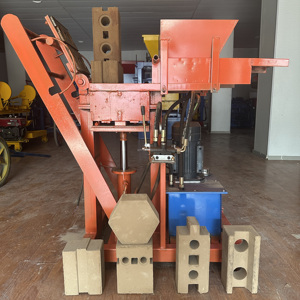
All categories
Featured selections
Trade Assurance
Buyer Central
Help Center
Get the app
Become a supplier

(983 products available)


























Molybdenum ground block exists in different types, thus creating diverse options for users. Molybdenum is a silvery metal, quite dense, strong, and often used at extreme temperatures. Here are common types:
Plain molybdenum ground blocks are made through the use of pure molybdenum, an element that is known for its toughness and ability to resist huge temperatures. Often used in electronics, high-strength components, and furnace parts. Because of its high melting point, it is suitable for extreme conditions.
Molybdenum-copper composite combines the two metals: molybdenum and copper. This combination results in a block with the tremendous toughness and thermal resistance of molybdenum and electrical conductivity of copper. It is used frequently in electrical contacts, heat sinks, and applications in satellites.
A sintered ground blockis prepared by compacting and heating molybdenum powder. This process offers molybdenum blocks with customized properties, best suited for particular applications. Sintered blocks often have superior wear resistance and longer service life in rugged environments.
Molybdenum blocks can also be strengthened by adding alloying elements such as titanium or hafnium. These alloys increase the strength and corrosion resistance of the blocks, making them more appropriate for chemical processing in industries.
In terms of maintenance, properly maintaining molybdenum blocks ensures consistency in performance over time.
Molybdenum blocks are very functional, hence their application varies across many industries due to their unique properties.
Molybdenum alloy ground blocks find their application in many aerospace components, from rocket engines to heat shields. These materials retain their strength at elevated temperatures and resist deformation.
Molybdenum copper ground blocks utilized in electrical systems demand high-current electrical contacts. The exceptional thermal conductivity of molybdenum helps to dissipate heat effectively.
In the machining industry, molybdenum blocks make electrode in spark machining. Also, they are used in mold and die manufacturing because of their ability to withstand wear and tear as well as high temperatures, thus increasing the lifespan and durability of the tooling.
High temperatures and radiation levels require nuclear reactors to use molybdenum ground blocks for structural components. Strong Block retains strength while providing outstanding radiation resistance.
Molybdenum grounded blocks have corrosion-resistant properties. A sustainable block is fit for chemical processing equipment used in corrosive environments. This application ranges from pipes to reactors and thus aids in durability and long-term reliability.
Temperature molybdenum blocks are also applicable in creating furnace parts. Due to their high melting point and ability to resist oxidation, they are used to construct reliable furnace components, including heating elements and furnace linings.
The molybdenum powder quality greatly influences the block's structural integrity. Impurities and contaminants weaken or change the material properties. Poor-quality powder affects electrical conductivity and corrosion resistance.
The parameters determine how well the molybdenum powder binds. Sintering at the wrong temperature or time can lead to a weak structure with low density. Both under-sintering and over-sintering cause cracks or pores.
Adding alloying elements aims to improve molybdenum's mechanical properties. However, the type and amount chosen greatly influence the ground block's final characteristics. Too much or too little of a particular alloy can lead to brittleness or decreased strength.
The method used to grind the sintered block dictates the surface finish and dimensions achieved. A poor grinding process leads to an uneven surface, which increases friction in application and decreases the block's functionality in tasks.
Environmental factors such as humidity and temperature affect molybdenum's oxidation state. Oxidation degrades the block surface, thus changing its physical and chemical properties. High humidity leads to oxidation, which degrades surface properties and corrosion resistance.
A1. Molybdenum ground is usually applicable in high-precision metalworking processes. It creates a stable platform for tools or workpieces to enhance accuracy in such processes as grinding, machining, and fabricating.
A2.Molybdenum blocks are grounded by smoothing and polishing their surface. They enable the establishment of a flat and even working surface to achieve the desired precision in metalworking.
A3. Yes, molybdenum blocks have abrasion due to their hardness and strength properties. They serve well in applications involving friction or contact with other materials.
A4.Molybdenum blocks have some corrosion resistance. Chemical exposure over time can lead to gradual degradation.
A5.Yes, molybdenum grounded blocks are revered for their capability to tolerate higher temperatures. They maintain strength, hence suitable for extreme industrial conditions.